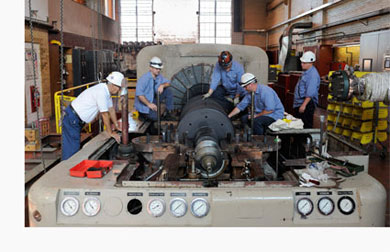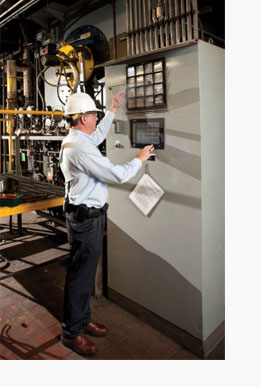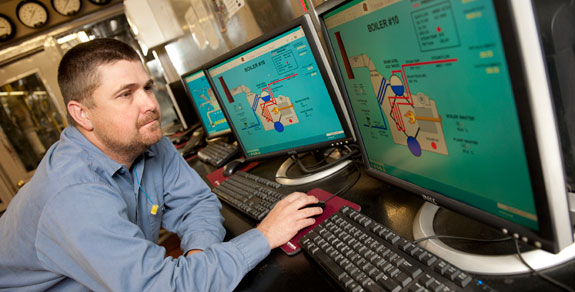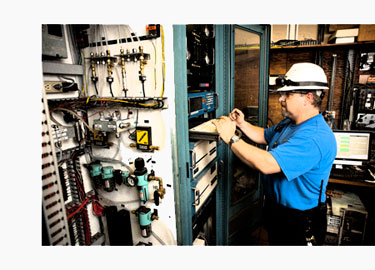HOW TECH TICKS

Distinguished by a towering 180-foot-high radial brick smokestack, one of the least-known and seldomly visited places on campus plays an integral role in the university's infrastructure. The Central Steam Power Plant generates an annual steam output greater than 943 billion BTUs (British thermal units, one of which is approximately the heat produced by burning a single wooden match) and provides campus buildings with a portion of their heat, hot water, and electricity needs.

Commissioned in 1975, the 6,250-kilowatt, 12,470-volt steam-turbine-powered generator expends generated steam through an underground tunnel network. The turbine produces nearly 27 million kilowatt-hours of electricity annually.

At the heart of the plant are five boilers, each outfitted with superheaters rated at 80,000 or 100,000 pounds of steam per hour. Four of the current boilers were installed prior to 1970, and a fifth was added in 1997 to meet growing demand.
The boilers produce steam at 600 pounds per square inch and up to 825 degrees.
Nearly 90 percent of campus buildings are connected to the plant through an extensive network of underground tunnels. More than six miles of steam lines and piping provide heat to more than 6.8 million square feet of campus buildings. Only personnel with confined-spaces training are permitted to enter the tunnel system.

Some 85-90 percent of the water used in the combined heat and power plant can be retrieved and reused. But before the water can be used in the boilers, it must run through de-aerators (to remove oxygen and other dissolved gasses) and de-mineralizers (for purification). To guarantee purity, the water is tested every four hours in the plant’s water lab. “The water has to be very pure before using it in the boilers. If not, it’s like plaque in an artery,” said Byron Nichols, associate director of utility systems.

Needless to say, today’s plant has undergone several upgrades since opening in 1901. Most noticeable is the switch to electronic control systems. The control room features monitors that oversee various plant features.

The plant's efficiency is tracked using a Continuous Emissions Monitoring System, which is calibrated daily to ensure accurate readings. The coal-burning boilers are equipped with scrubber and bag-house systems that control particulate and acid-gas emissions. Boiler No. 7's new bag house removes more than 98 percent of particulates.